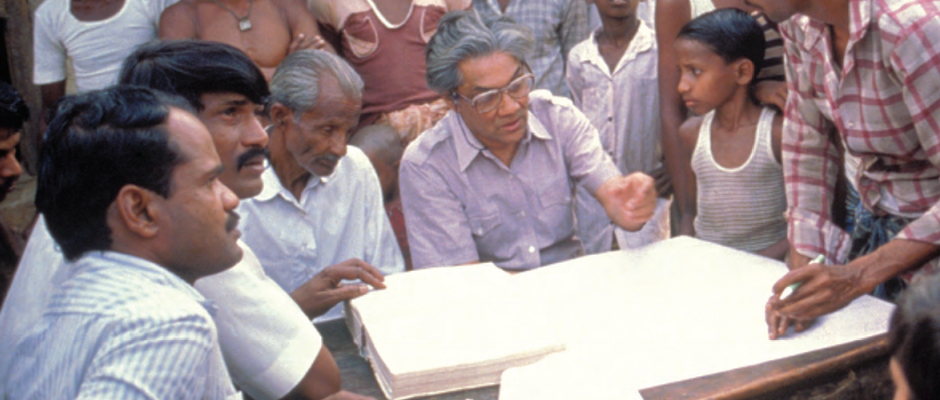
Federalism is a buzzword in the Philippines these days. A former chief justice of the Supreme Court, Reynato Puno, recently launched a highly publicised national renewal movement, Bagong Sistema, Bagong Pag-asa (New System, New Hope), calling for a change in the 1987 Constitution through a constitutional convention. The target is to ratify a new constitution by 2018 and hold elections for a new government in May 2019.
Describing itself as a movement for system change, Bagong Sistema, Bagong Pag-asa is calling for an overhaul of the Philippines’ political system ‘to address an impending crisis and put the country on the path of genuine democracy, peace, and inclusive economic growth and prosperity’. Its centrepiece is the establishment of a federal system of government. Supporters believe this framework to be the most suitable for accommodating the diversity and divisions in Filipino society.
For many countries with a federal form of government, such as Australia, federation was a state-building effort — a platform to allocate power and resources between national and local levels of government, while preserving local-government autonomy. But for the Philippines, the pathway to federation would effectively be the reverse. There is already a central government in full control of the country, but a strong role for local autonomy within the federal framework has yet to find strong acceptance. Any attempt at federating would first have to overcome a culture of centralised government engrained by centuries of colonial rule and 20 years of dictatorship.
As Professor Cheryl Saunders argues, federalism is just one example along a spectrum of arrangements for establishing greater or lesser degrees of local autonomy within a nation-state. In general, she posits four principal types of decentralised arrangements: delegation, devolution, regional autonomy, and federation. These arrangements exist on a spectrum, with delegation being the weakest and federation the strongest. This means a country like the Philippines could choose to navigate through the different levels of local autonomy on the road to federation. These four general types of decentralisation are not distinct, but shade into one another. So Filipinos do not need to envisage the shift to a federal form of government as a single and momentous event — the transition could be made step-by-step.
The Philippines currently has a mechanism for achieving a federal system of government: the Local Government Code (LGC) of 1991. Section 2 of the Code provides for ‘a more responsive and accountable local government structure instituted through a system of decentralization whereby local government units shall be given more powers, authority, responsibilities, and resources’. The process, the Code adds, ‘shall proceed from the national government to the local government units’.
The Philippines has been praised as one of the first developing nations to embrace the concept of local autonomy. But the reality is that, after being in effect for more than two decades, the LGC has not been a major success in facilitating a federal system of government, and there is still confusion about how the LGC should be implemented. So a move towards federation in the Philippines will need to begin with a serious look at the decentralisation provisions of the LGC.
Two particular issues from the current decentralisation arrangements highlight the difficulties in achieving a smooth and orderly evolution to a federal system.
First, the Philippine Development Plan 2011–2016 found that the LGC’s allocation of responsibilities between the tiers of governments was unclear. This is highlighted by the state of the public health system. Under the LGC, the national government (through the Department of Health) and local government (through local health boards) have a mandate to provide public health services. But a lack of clear responsibilities for service delivery means no one is held accountable for the lamentable state of public health.
Unequivocal allocation of responsibilities between the central government and local government is critical to the successful operation of a federal structure. But this seems to be poorly understood in the Philippines — and must be a serious cause to doubt the readiness of Filipinos to embark on a process of federation.
The second problem relates to funding arrangements for local governments. The Internal Revenue Allotment (IRA), designed to encourage fiscal autonomy for local government, determines a local government’s share of revenues from the national government. But most, if not all, governors and mayors have become extremely reliant on the IRA as their primary source of development funding.
Local government having the independence to determine its own socioeconomic policies is the very lynchpin of federalism. But reliance on patronage from the national level by local leaders only serves as an impediment to the benefits of true federalism.
Despite the obstacles, a move towards greater federalism is still worth pursuing. Addressing the two identified anomalies in the LGC will be a first step towards the goal of federation. But the journey will demand patience and sacrifice from all Filipinos.
Michael Yusingco is a freelance legislative and policy consultant based in Melbourne. He has a Masters degree in Law and Development from the University of Melbourne Law School. He is the author of Rethinking the Bangsamoro Perspective.
This article was originally published on www.eastasiaforum.org



